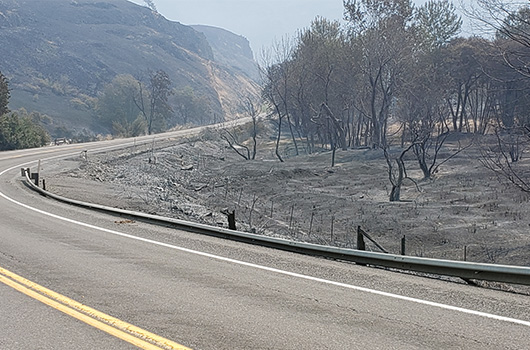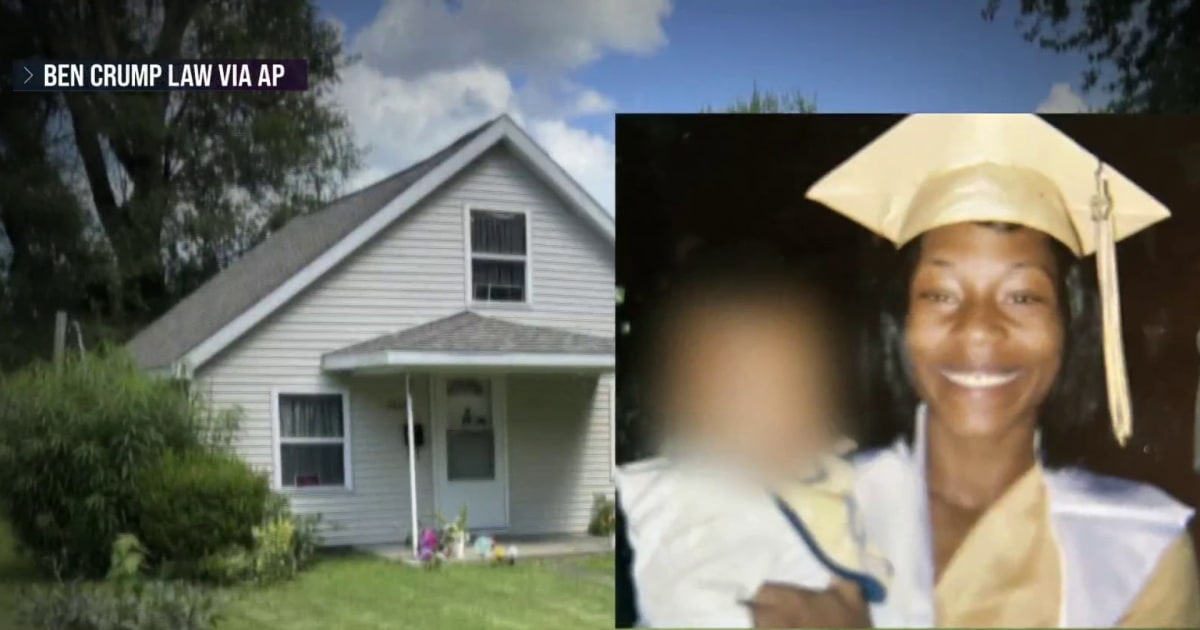Paramedics had a choice when the call brought them to a man passed out in the dark at K and North Capital streets Northeast, his arms crossed loosely over his chest.
Washington, D.C
How D.C.’s first sobering center could ease drug and alcohol addiction

Until recently, their only choice would have been a hospital emergency room. But on this cold January night, the paramedics had another option: the D.C. Stabilization Center, a place where people who’ve used drugs or alcohol can safely recover for up to 24 hours under the care of nurses and mentors who have been in their shoes.
In just over three months, the center on K Street Northeast has surpassed 1,000 admissions.
Mayor Muriel E. Bowser opened the center to fanfare last year as part of the District’s overall plan to reduce fatal overdoses, which have killed more than 400 Washingtonians annually for four consecutive years, outpacing the city’s homicide toll.
The facility, one of about 60 across the country in cities such as Baltimore, San Francisco, Houston and St. Louis, aims to link patients with treatment — if and when they are ready. If successful, District officials say, the approach will free up overburdened emergency responders and alleviate strain on hospitals still confronting pandemic-era staffing shortages.
Comprehensive solutions to the opioid crisis have eluded the city as the death toll continues to rise. And while public health advocates have called for the Bowser administration to demonstrate greater urgency and provide more wraparound supports, such as housing, many have hopes that the center will help.
A warm room. A safe place to sleep it off. Someone to talk to who understands. All awaited the man on the curb, if he wanted them.
Paramedics covered him in a pale yellow sheet before loading him onto a stretcher and into the back of an ambulance. Robert Holman, the D.C. Fire and EMS medical director along for the ride this evening, rested a gloved hand on his shoulder and tried to rouse him with basic Spanish. “Cómo sientes?”
The man’s head lolled back under the bright lights as a digital clock ticked off the minutes. 3. Firefighter paramedic Cody Grosch tapped a report on his laptop as paramedics checked his vital signs and discussed his condition.
The radio sprang to life again. The ambulance was on the move.
It was 2018, and the horrors of the pandemic were still years away. Still, medics were taking longer to drop off patients at hospitals as calls were mounting for people on drugs or alcohol, city data shows, reflecting in part a surge of deadly fentanyl into the city’s drug supply.
Holman pushed for a sobering center but knew the city’s Fire and EMS department couldn’t get it done alone. That’s when Barbara J. Bazron, director of the Department of Behavioral Health, reached out, saying she helped set up a similar center in Baltimore and it could work in D.C.
Years later, they are betting millions in city funds annually on the center to help meet a still growing need. There were 427 opioid-related fatal overdoses in D.C. last year through October, according to the most recent data available from the chief medical examiner’s office, putting the District on track to outpace a 2022 high of 461 overdoses.
Bowser declared a public health emergency on opioids in the fall — set to expire Feb. 15 — and a panel of local officials, providers and recovering drug users known as the Opioid Abatement Advisory Commission began meeting in October to make recommendations to Bowser for how to divvy up the settlement funds to prevent and treat substance abuse disorder.
City officials say they know the center won’t solve all the city’s problems with addiction, but it could save lives.
The location was an early hurdle. They looked back at a year of data to confirm known hot spots in Columbia Heights and east of the Anacostia River, as well as in central D.C. near Union Station and the homeless shelter at 2nd and D streets Northwest, one of the largest in the nation. Despite pushback from advocates who argued Wards 7 and 8 needed it more, officials chose 35 K St. NE for its central location and the relative ease of using a building where the city already ran an adult behavioral health clinic.
Covid put plans on hold in 2020, and they tried three times to find a local operator before settling on an agency based in Arizona, Community Bridges Inc., to run the center.
Since the center opened in late October, 730 people people have been admitted, some more than once, for a total of 1,019 admissions, city data as of Feb. 5 shows. More than 70 percent of admissions have been Black and 80 percent male. The average age is 45.
Nearly 60 percent of patients used alcohol and at least 10 percent opioids, city data shows, based largely on self-reporting. The opioid antidote naloxone was administered twice, according to city data. The center also sees cases involving PCP, K2 and xylazine.
Nurses typically do a urine drug test and breath analysis on patients, who change into scrubs and can shower and eat if they’d like. Contraband such as weapons or drugs is confiscated.
Officials say they do not yet have a plan for tracking the long-term progress of patients, knowing they may turn down treatment many times before giving it a try. One person visited at least 17 times in just over three months, Bazron said, adding their 18th visit could be the one that does the trick.
About 17 percent of total admissions, 176 patients, have gone to residential treatment or a shelter or gotten a referral for other behavioral health care, city data shows, but for now, that’s where the path ends.
“We’re making an initial hot connection,” Bazron said.
Back on K Street Northeast, the ambulance pulled into the parking lot at the stabilization center, known as Hospital 99 to medics. Flashing red ambulance lights bounced off the beige bricks.
The man lay motionless, his head turned to the side, as paramedics rolled the gurney up a ramp, through glass doors and into the brightly lit lobby. A sign on the wall pledged empathetic care, a safe space to recover and a pathway for a long-term solution.
Nurses were expecting him — and recognized him. The man, 63, had left around noon that same day, they said, planning to go to a shelter. Paramedics found him barely a block away.
“How ya doing? You gonna come stay with us?” the center’s clinical director, Mary Page, asked. He nodded. A wheelchair appeared. “Remember me from this morning? I gave you food?”
Alert to verbal/tactile stimuli? Check. Blood pressure under 200 mmHg. Check. No signs or trauma or need for sutures. Not combative or violent. No chest pain. A nurse searched his jacket and handed a bottle of Taaka vodka to a security officer, who stashed it in a drawer. His clothes and belongings would be catalogued and locked in a bin for him.
They swapped his shoes for grippy socks. His feet dragged on the floor as he was wheeled backward into an intake room. “Feel better,” Holman said after him, as the door closed.
Most patients rest in one of 16 smooth blue reclining chairs under low lights and the soft glow of television, as nurses move around the floor. The average stay is 15 hours.
Paramedics have brought the vast majority of patients to the center — the others come via friends or family or walk in on their own. Not everyone is eligible.
The sobering center is not right for anyone who shows signs of trauma or needs sutures, is combative or violent or has vital signs outside a certain range, among other qualifiers on a 14-point checklist that medics and the center staffer both sign.
Two of these came during another freezing 24-hour shift in January.
At 2:46 p.m., dispatch sent a crew to a reported cardiac arrest — a signal of a possible drug overdose — at Georgia Avenue and Columbia Road Northwest. There, they found a 41-year-old man sitting on the ground in the corner of a bus shelter, clutching the bench seat, his head nodding as he struggled to stay awake.
They suspected alcohol intoxication. The ad behind him showed a hand holding a canister of Narcan. “Be Ready. Save a Life.”
He told paramedics he wanted to get on the bus. At 86 over 70, his blood pressure was too low for the stabilization center. They took him to George Washington University Hospital, where medics spent about an hour and 45 minutes waiting for a bed for the patient, FEMS officials said later.
At 6:33 p.m., it was 26 degrees when dispatchers routed a crew to North Capital and H streets Northwest. Paramedics found a man, 40, shivering and moaning in nothing but a sweatshirt and sweatpants, saying he wanted to kill himself.
Firefighter paramedic Kyle Belton wrapped a blanket over his head and shoulders and propped him up against a building for support.
“Cold,” the man said over and over.
“We’re gonna get you some help,” Belton said.
They pricked his finger to test his blood sugar. At 132 over 78, his blood pressure was elevated. He was shaking too hard for them to get an accurate heart rate. Someone suspected he may have used K2, or synthetic marijuana.
The man wasn’t out of control but was probably off his psychiatric medication, emergency personnel concluded. Suicidal ideation disqualified him from the stabilization center, making a hospital the best choice.
Later, they could arrange a ride for him to a warming center. Belton advised EMTs on their way to prepare heat packs.
Once they eased him into an ambulance, Belton retrieved his sneakers from the street, brushing dirt from the white leather.
“You’re not alone,” Belton told him.

Washington, D.C
D.C. Bars and Restaurants Getting Into the Olympic Spirit

During the last Summer Olympics in Tokyo, we were just emerging from the pandemic and the competition was played in front of a mostly empty audience. Fast forward a few years, and Paris is the backdrop for sport’s biggest stage and millions are expected to descend upon the City of Lights to watch their country hopefully bring home a medal.
For those opting to remain stateside, there are plenty of restaurants in our nation’s capital getting into the Olympic spirit. Think fabulous French bites, themed beverages, and live broadcasts of select events. There are enough participating spots to visit a different one every day of the Games (July 26-August 11). Eater just obtained D.C.’s list of 74 bars that got the okay to stay open around the clock — and serve alcohol from 6 a.m. to 4 a.m. — during the duration of the Olympics, which includes well-known names like Service Bar, Vera, Mission, Capo Deli, and Midlands.
Scroll on to find out where to cheer on Team USA’s athletes while partaking in limited-edition food and drinks.
Read More
If you buy something or book a reservation from an Eater link, Vox Media may earn a commission. See our ethics policy.
Washington, D.C
Bigger, stronger, safer: DC’s new Douglas Street pedestrian bridge reopens – WTOP News

The Douglas Street pedestrian bridge’s construction took three years and $17 million to rebuild, after it collapsed in June of 2021 after being struck by the load of a large truck.
Thousands of pedestrians in Ward 7 will be safer Thursday thanks to the reopening of the Douglas Street Pedestrian Bridge over Kenilworth Avenue.
“It’s safer, it’s wider, and it’s better lit,” said D.C. Mayor Muriel Bowser at the bridge’s grand opening on Thursday. “It has improved sidewalks.”
At the inaugural walk across the new bridge, the mayor — joined by the city’s Department of Transportation and members of the community — pointed out that people of all abilities will have an easier time using the bridge.
“Whether they are using a cane or a wheelchair, they will be able to access this very important pedestrian asset,” Bowser said.
The bridge crosses over the I-295 corridor in Northeast and will help those that live in the neighborhoods of Parkside, Mayfair and Eastland Gardens get to the Deanwood Metro station.
The bridge’s construction cost about $17 million.
“I’m 61 years old, I don’t like going all the way around,” said Claude McCain, of Kenilworth. He told WTOP that the new pedestrian bridge will save him 40 minutes of extra walking a day.
The original Douglas Street Pedestrian Bridge was built in the 1950s and had become structurally damaged and was deteriorating, according to D.C. officials.
“It was low. It ended before the service lanes. It was really unsafe for pedestrians,” said Sharon Kershbaum, acting director of D.C.’s Department of Transportation. “This is an upgrade in every sense of the way.”
She told WTOP that nearly $14 million of the $17 million bridge was funded by grants from the federal government.
After the inaugural walk across the bridge, Mayor Bowser expressed appreciation to the members of DDOT that were in attendance.
“I want to say thank you to all the people you see in the yellow jackets because they were able to get this bridge up and keep the highway open,” Bowser said.
WTOP’s Ciara Wells contributed to this report.
Editor’s Note: An earlier version of this story incorrectly stated that the Douglas Street Pedestrian Bridge collapsed in 2021. The Lane Place bridge actually collapsed in 2021 after being struck by a truck. Our article has been updated with the correct information, and we apologize for the error.
Get breaking news and daily headlines delivered to your email inbox by signing up here.
© 2024 WTOP. All Rights Reserved. This website is not intended for users located within the European Economic Area.
Washington, D.C
Families of Hamas hostages share optimism after meeting with Israeli PM Netanyahu in DC

WASHINGTON (7News) — After walking out of the White House, relatives of U.S. hostages being held by Hamas said an hour-long meeting with Israeli Prime Minister Benjamin Netanyahu and President Joe Biden left them with a new feeling of optimism.
They said after asking difficult questions and getting answers, that they could not share, they were filled with the most optimism they have had since the first round of hostage releases last year.
“We did get a commitment from the President and from the Prime Minister that both teams will be working by the hour in the coming days to put out an adjusted proposal to Hamas, and they understood completely and partnered with us around the urgency,” said Jonathan Dekel-Chen, the father of hostage Sagy Chen.
They also said they were well aware of the fiery protests taking place around the District that included the burning of an American flag and monuments being tagged with paint.
READ MORE | At least 23 arrested in DC as thousands protest Israeli PM Netanyahu’s speech to Congress
“People have the right and obligation to speak their mind,” said Dekel-Chen. “We all accept that. Some of it is hurtful because our loved one’s lives are in the balance, and this is not a political science laboratory for us. But as long as the rules of democracy, and as long as one doesn’t go over that line with hate speech and incitement, then that’s what democracy should be.”
The visit by Netanyahu stirred the anger of pro-Palestine demonstrators throughout the week.
The protests led to clean-up efforts on a relatively quiet Thursday.
READ MORE | Crews begin clean-up of Union Station’s Columbus Circle after Netanyahu protests
The families of U.S. hostages said they do not believe the election season and leadership change will set them back now that a change in the White House is now a certainty.
“On the contrary, I actually think it allows the President to be laser-focused on the things that are true priorities to him, and saving human beings, cherished human beings, 115 of them, eight of whom are U.S. citizens, is one paramount issue for him,” said Rachel Goldberg-Polin, mother of hostage Hersh Goldberg-Polin.
“We’ve got a rare moment now where the current President of the United States and anybody who might become President of the United States, both Vice-President Harris and Donald Trump, are all aligned in saying this deal must get done now,” said Jonathan Polin, father of Hersh Goldberg-Polin.
-

 World1 week ago
World1 week agoOne dead after car crashes into restaurant in Paris
-

 Midwest1 week ago
Midwest1 week agoMichigan rep posts video response to Stephen Colbert's joke about his RNC speech: 'Touché'
-

 News1 week ago
News1 week agoVideo: Young Republicans on Why Their Party Isn’t Reaching Gen Z (And What They Can Do About It)
-

 Movie Reviews1 week ago
Movie Reviews1 week agoMovie Review: A new generation drives into the storm in rousing ‘Twisters’
-

 News1 week ago
News1 week agoIn Milwaukee, Black Voters Struggle to Find a Home With Either Party
-

 Politics1 week ago
Politics1 week agoFox News Politics: The Call is Coming from Inside the House
-

 News1 week ago
News1 week agoVideo: J.D. Vance Accepts Vice-Presidential Nomination
-

 World1 week ago
World1 week agoTrump to take RNC stage for first speech since assassination attempt















